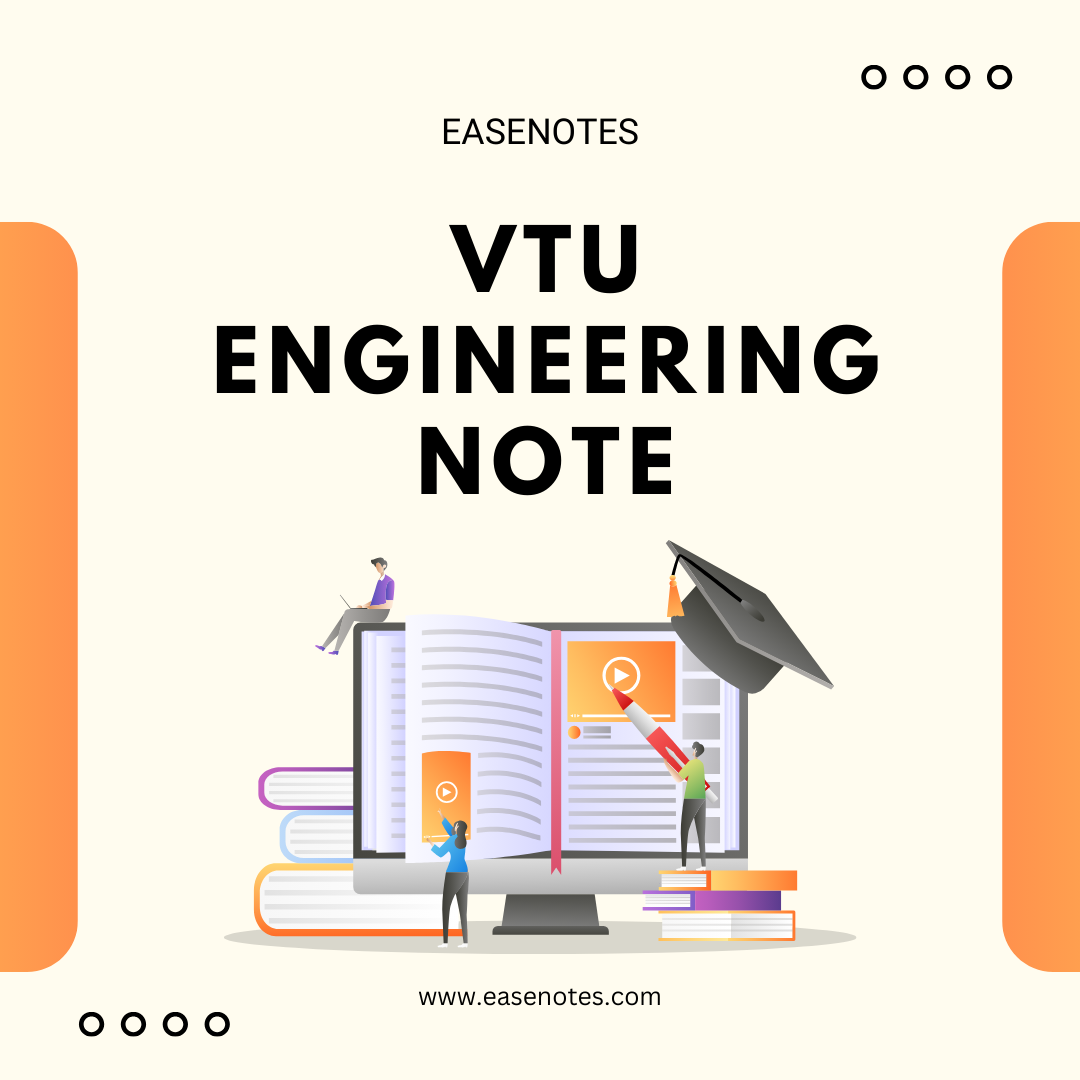
- contact@easenotes.com
- Phone: (+91) 9964716807

21CS53-Database Management Systems 21CS53
VTU University notes on 5th SEM Computer science and Engineerings 2022 scheme notes 2024. Study materials and previous year question papers on easenotes 2024.

Introduction to Databases: Introduction, Characteristics of database approach, Advantages of using the DBMS approach, History of database applications.
Overview of Database Languages and Architectures: Data Models, Schemas, and Instances. Three schema architecture and data independence, database languages, and interfaces, The Database System environment.
Conceptual Data Modelling using Entities and Relationships: Entity types, Entity sets, attributes, roles, and structural constraints, Weak entity types, ER diagrams, Examples.
Relational Model: Relational Model Concepts, Relational Model Constraints and relational database schemas, Update operations, transactions, and dealing with constraint violations.
Relational Algebra: Unary and Binary relational operations, additional relational operations (aggregate, grouping, etc.) Examples of Queries in relational algebra.
Mapping Conceptual Design into a Logical Design: Relational Database Design using ER-to-Relational mapping.
SQL: SQL data definition and data types, specifying constraints in SQL, retrieval queries in SQL, INSERT, DELETE, and UPDATE statements in SQL, Additional features of SQL.
Advances Queries: More complex SQL retrieval queries, Specifying constraints as assertions and action triggers, Views in SQL, Schema change statements in SQL.
Database Application Development: Accessing databases from applications, An introduction to JDBC, JDBC classes and interfaces, SQLJ, Stored procedures.
Case study: The internet Bookshop.
Normalization-Database Design Theory: Introduction to Normalization using Functional and Multivalued Dependencies: Informal design guidelines for relation schema, Functional Dependencies, Normal Forms based on Primary Keys, Second and Third Normal Forms, Boyce-Codd Normal Form, Multivalued Dependency and Fourth Normal Form, Join Dependencies and Fifth Normal Form. Examples on normal forms.
Normalization Algorithms: Inference Rules, Equivalence, and Minimal Cover, Properties of Relational Decompositions, Algorithms for Relational Database Schema Design, Nulls, Dangling tuples, and alternate Relational Designs, Further discussion of Multivalued dependencies and 4NF, Other dependencies and Normal Forms.
Transaction Processing: Introduction to Transaction Processing, Transaction and System concepts, Desirable properties of Transactions, Characterizing schedules based on recoverability, Characterizing schedules based on Serializability, Transaction support in SQL.
Concurrency Control in Databases: Two-phase locking techniques for Concurrency control, Concurrency control based on Timestamp ordering, Multiversion Concurrency control techniques, Validation Concurrency control techniques, Granularity of Data items and Multiple Granularity Locking.